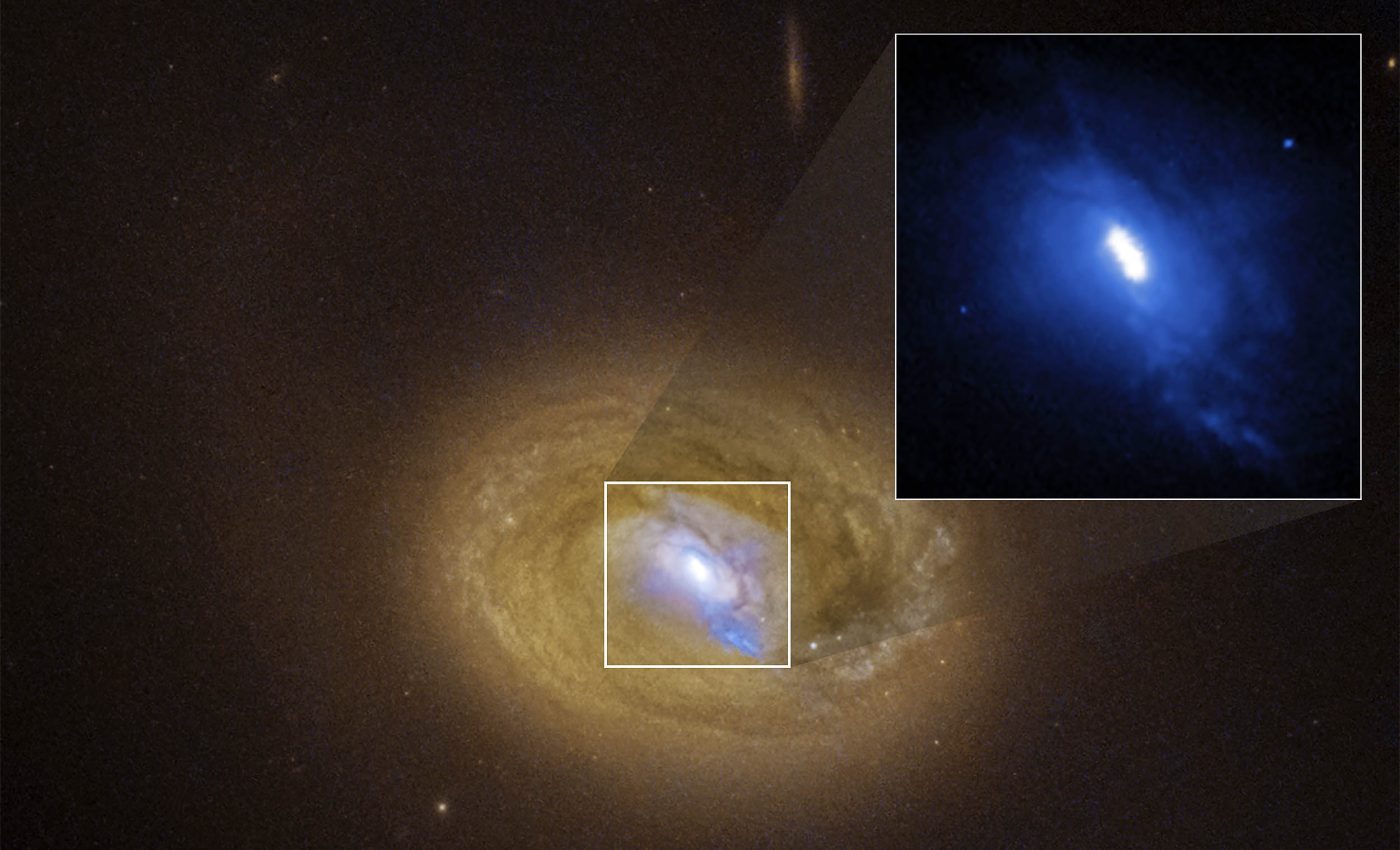
Hubble spots two supermassive black holes spiraling on a collision course
Black holes are squaring off in a cosmic dance that scientists have captured in extraordinary detail, thanks to NASA’s Hubble Space Telescope and the Chandra X-ray Observatory.
These massive celestial objects, pulling in everything around them with their immense gravitational force, are locked in a dramatic gravitational tango, offering a rare glimpse into the powerful forces shaping our universe.
Twin supermassive black holes
The closest confirmed pair of supermassive black holes, located about 300 light-years apart, are buried deep within galaxies on the verge of collision. They’re shining brightly as active galactic nuclei (AGN), fueled by infalling gas and dust.
The intense brightness is a result of the energy released as matter spirals into the black holes, heating up and emitting radiation across multiple wavelengths.
This cosmic encounter offers valuable insights into the complex interactions driving galaxy mergers and the evolution of black holes over time.
Dual black holes headed for collision
This AGN pair, detected in the gas-rich galaxy MCG-03-34-64, is the closest one observed in the local universe using multiwavelength observations.
“Like two Sumo wrestlers squaring off, the closest confirmed pair of supermassive black holes have been observed in tight proximity,” noted NASA.
Previous discoveries of “dual” black holes have shown greater separations, but this pair provides a unique glimpse into a nearby cosmic merger, situated about 800 million light-years away.
Study lead author Anna Trindade Falcão is an expert in the Center for Astrophysics | Harvard & Smithsonian in Cambridge, Massachusetts.
“We were not expecting to see something like this,” said Falcão. “This view is not a common occurrence in the nearby universe, and told us there’s something else going on inside the galaxy.”
Powerful sources of high-energy emission
The discovery was serendipitous. Hubble’s high-resolution imaging revealed three optical diffraction spikes within the host galaxy, suggesting a concentration of glowing oxygen gas. Falcão’s team followed up with the Chandra X-ray Observatory to investigate.
“When we looked at MCG-03-34-64 in the X-ray band, we saw two separated, powerful sources of high-energy emission coincident with the bright optical points of light seen with Hubble,” Falcão explained.

“We put these pieces together and concluded that we were likely looking at two closely spaced supermassive black holes.”
Further confirmation came from archival radio data from the Karl G. Jansky Very Large Array. The energetic duo emits powerful radio waves, further solidifying the theory.
“When you see bright light in optical, X-rays, and radio wavelengths, a lot of things can be ruled out, leaving the conclusion these can only be explained as close black holes,” said Falcão.
The origin of a third light source seen by Hubble remains a mystery.
“That might be gas that is shocked by energy from a jet of ultra high-speed plasma fired from one of the black holes, like a stream of water from a garden hose blasting into a pile of sand,” said Falcão.
A cosmic collision of black holes
As these two black holes spiral closer over millions of years, they are destined to collide, sending ripples through space in the form of gravitational waves.
While current detectors like LIGO capture waves from stellar-mass black hole mergers, the upcoming LISA mission is designed to detect the longer wavelengths produced by supermassive black holes.
Partnering with NASA, the European Space Agency is leading the mission, which is scheduled to launch in the mid-2030s.
“The next-generation gravitational wave detector, called the LISA (Laser Interferometer Space Antenna) mission, will consist of three detectors in space, separated by millions of miles, to capture these longer wavelength gravitational waves from deep space,” noted NASA.
The fate of merging black holes
As the two supermassive black holes continue their slow spiral toward one another, they will eventually collide in a cataclysmic event that will reshape their surrounding galaxies.
The black hole collision, expected to take millions of years, will likely eject massive amounts of energy and material and alter the cosmic environment.
Though the final merger is far off, ongoing observations of this pair provide a rare opportunity to study the dynamics of merging black holes and how they influence galaxy evolution.
The study is published in The Astrophysical Journal.
—–
Like what you read? Subscribe to our newsletter for engaging articles, exclusive content, and the latest updates.
Check us out on EarthSnap, a free app brought to you by Eric Ralls and Earth.com.
—–













